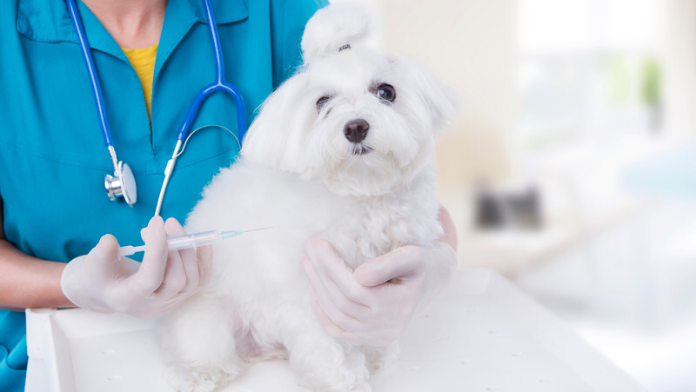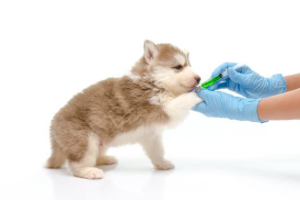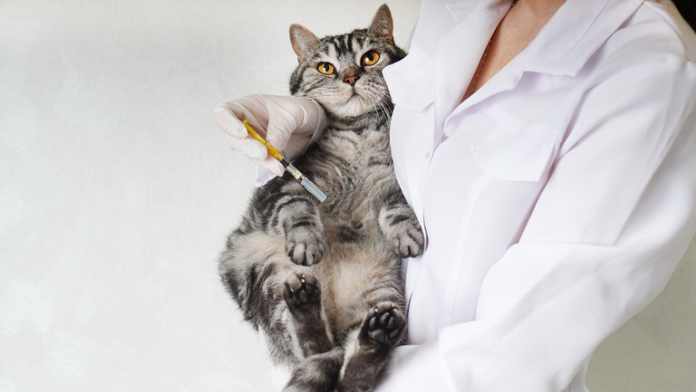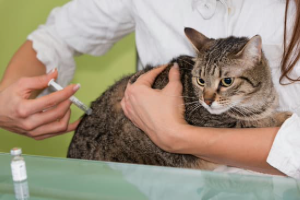
The Basics for Pet Owners
There are fewer things that bring more smiles to the vet clinic than an owner bringing in their new happy puppy (or puppies)! Adding a new pet to your family can be an exciting chapter, but there can also be a lot of questions too. We wish we could sit down with every family that comes in to go over some truly important puppy topics, but unfortunately that reality is not often possible. Because of this having resources for owners to refer back to is both important and helpful. We’ve included our top tips and considerations for vaccinations for new puppy owners in 2021.
Determining what vaccinations are appropriate for your puppy should absolutely be a conversation with the vet.
This will be based on a list of core vaccines (vaccinations recommended for all puppies) then potential additional vaccinations based on your puppies lifestyle.
When should puppies get vaccinations?
Vaccines are typically started between 6-8 weeks of age and initial boosters may be continued until around 12-16 weeks of age.

Whether boosters are required and the duration of protection varies with each type of vaccine.
- Core vaccinations recommended for all dogs:
- Distemper virus:
- This deadly virus can affect the respiratory, neurologic, and gastrointestinal systems in dogs. It is spread quickly by respiratory secretions or bodily fluids dog to dog, and can also be spread by contaminated environments/equipment. Signs may include sneezing/coughing, ocular or nasal discharge, vomiting/diarrhea, and potentially neurologic changes such as seizures or muscle tremors. Infections with this virus can cause long term neurological effects in those that survive, but the disease is commonly fatal. Vaccinations for distemper are safe and effective.
- Parvovirus:
- Similar to distemper virus, parvo virus is also HIGHLY contagious and can be fatal. Parvo is spread in pet faeces, and can cause severe bloody vomiting and diarrhea, and can damage the pets immune system. It can also be spread by contaminated environment/equipment. Treatment is solely supportive care/hospitalization as there is no “cure” for parvo. Again, vaccinations for parvo are safe and effective and should also be given to all dogs.
- Adenovirus (canine infectious hepatitis):
- This virus is less commonly seen than parvo and distemper, however is also easily spread by bodily fluid and can cause severe disease in the liver, lungs, eyes, etc. of dogs. Adenovirus is commonly found in a combination vaccination with parvovirus and distemper.
- Note: Distemper virus, parvovirus, and adenovirus typically come in a three way combination vaccination.
- Start at 6-8 weeks, boost 3-4 weeks later (must be older than 10 weeks at 2nd vaccination). At this point the vaccine is good for 1 year, then given every 3 years.
- There are also some newer vaccinations on the market that require different booster schedules, so these times may vary.
- Leptospirosis:
- Leptospirosis is a bacteria spread in the urine of mammals and can cause organ failure, particularly to the kidneys and sometimes liver. This disease is also what we call zoonotic, meaning people can also be affected by the bacteria (Weil’s disease). If an animal’s urine that is infected with lepto comes into contact with the mucus membranes (eyes, nose, mouth, etc) of another animal, they are at risk of infection. Symptoms are often general such as lethargy, vomiting, and decreased appetite among others. Animals that spend time outdoors around other dogs or wildlife, as well as animals that spend time around water (particularly standing water like puddles and streams) should absolutely be vaccinated for leptospirosis. Cases are now even becoming more common just in common pet relief areas such as those in flat and rental properties, so this is becoming a consideration as well.
- Typically started around 8 weeks of age, and can be started at the same time as with DHP. Requires two boosters initially given 3-4 weeks apart, then is given annually.
- Note: Many companies make a vaccination that contains distemper, adenovirus, parvovirus AND leptospirosis.
- Distemper virus:

- Non-core vaccinations based on risk/lifestyle:
- Rabies virus:
- Rabies is not currently present in the UK (fortunately). That being said, pets travelling outside of the UK should absolutely be vaccinated for rabies as this virus has no cure, is harbored in many species, and is fatal to animals AND humans. Rabies is required for international travel, and research should be done prior to animal transport for each country’s regulations.
- Can be given no earlier than 12 weeks. No initial boosters needed. First rabies is good for 1 year, then given every 3 years.
- Kennel cough/canine infectious respiratory disease complex:
- While kennel cough is typically associated with the respiratory bacteria Bordetella bronchiseptica, in reality it is a combination of insults of both viral and bacterial origin. Often a virus causes irritation of the respiratory tract, and then “normal” bacteria present will overgrow and cause clinical signs. A hacking loud cough is the most common sign, and is often spread rapidly in close quarters via respiratory fluids hence the name “kennel cough”. That being said, kennel cough can be spread by any dog to dog contact or exchange of saliva, so pets that are often exposed to other dogs should be vaccinated.
- Can be given as early as 6-8 weeks, no initial boosters needed. Given annually.
- Rabies virus:
Key messages:
- Your vet can help you determine which vaccinations are appropriate for your puppy! Our goals are to pick the most appropriate course based on current veterinary standards as well as your pets exposure/risk level.
- Each vaccination works differently and may require different numbers of boosters.
For the most up to date vaccination guidelines, check out the following resources:
- British Small Animal Veterinary Association (BSAVA) Vaccination Position Statement
- World Small Animal Veterinary Association (WSAVA) Vaccination Guidelines
Dr. Kirsten Ronngren, DVM MRCVS
Start your VetBox journey today and get your pets fleas, ticks and worm treatments covered.


